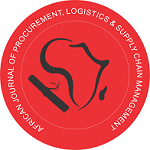Authors: 1Simona Baldi| 2Davide Vannoni
1ART- Transport Regulation Authority
2University of Torino and Collegio Carlo Alberto
Email: davide.vannoni@unito.it
Abstract
This paper is an extract from a chapter of the author’s PhD thesis. The opinions expressed are those of the author and do not commit the Transport Regulation Authority (ART). We thank Anna Bottasso, Maurizio Conti, Fabio Bagliano and three anonymous referees for their valuable suggestions. Special thanks go to Filippo Romano and Alberto Zaino from the Italian Authority for the Supervision of Public Contracts (AVPC) for making the drugs data available and to Mariangela Focacci from Farmindustria for data on DSO. This paper deals with the open issue about the choice between a centralized versus a decentralized public procurement strategy. Using a unique dataset on tender prices of selected drugs for hospital usage awarded by a sample of 52 Italian local health service providers (ASLs) between 2009 and 2012, we test which procurement system (centralized, decentralized or hybrid) performs better. Controlling for several covariates, among which measures of institutional quality and corruption, we always find that centralized and hybrid procurers pay lower prices as compared to decentralized units. Moreover, our results show that in areas in which institutional quality is lower, or corruption is higher, the effect of centralization in negotiating lower prices is much stronger, with savings that can reach also 50 percent of the price paid by ASLs that procure on their own.
Keywords: public procurement, centralization, decentralization, pharmaceutical spending

